SUMMARY
This is AI generated summarization, which may have errors. For context, always refer to the full article.
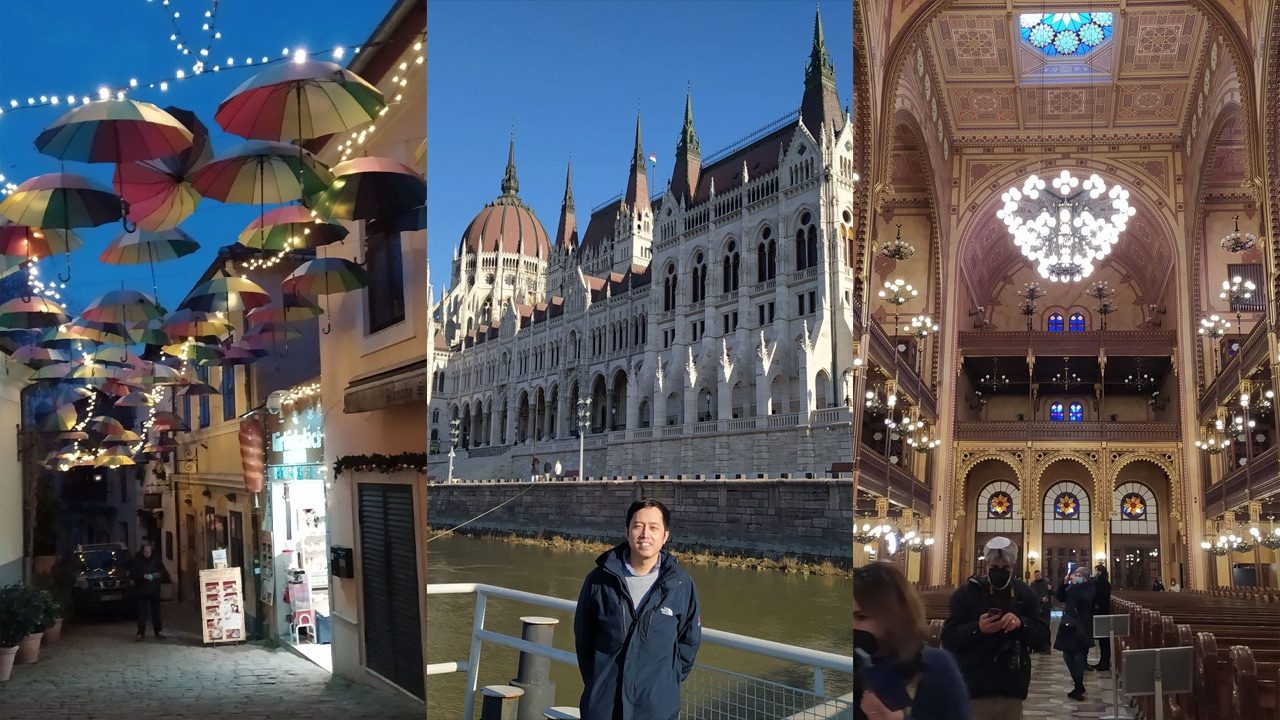
Budapest, also known as the “Pearl of the Danube,” is the capital of Hungary. This city straddles the Danube River and is famous for a variety of things such as striking architecture, its storied past as a former empire, thermal springs, and rich cultural heritage. Budapest used to be two different places, which was Buda and Pest. The unification of the two took place in the 1870s. Fast-forward to today, this vibrant metropolis is now a popular tourist destination with plenty to offer tourists.
It’s possible to do a day trip from Vienna or stay for just two days. However, I stayed under a week in Budapest, but I felt like I only scratched the surface. The city is also one of Hungary’s transportation hubs. I was able to do a few day trips because of the convenient train and bus connections to other cities and towns.

Getting a visa
Hungary is part of the Schengen area, meaning getting one visa from any member country grants you entry into all of them. I included Hungary in my itinerary when I got my visa through the Austrian Embassy.
If you plan on getting a Schengen visa through the Hungarian Embassy, you can apply through VFS.
It’s upon the discretion of the embassy if they’ll grant you a single-, double-, or multiple-entry visa.

Entering the country
Hungary shares land borders with several countries such as Slovakia, Romania, Serbia, Croatia, Slovenia, Austria, and Ukraine. The cheapest way to reach Budapest is by bus or train as part of a long trip around Europe. There are also numerous flights from other European cities to Hungary’s capital. If Hungary is your first port of entry, there are flights from Manila as well with a layover in the Middle East or Europe. You can look for flights through Skyscanner, WayAway, and other aggregator sites or book directly through your chosen airline. From the airport you can board bus 100E to the city center. Fare is roughly 900 Hungarian Forints or P125.
I traveled by bus from Zagreb, Croatia because it was the most affordable option (and I had time to kill). I would recommend taking FlixBus; you can buy tickets from their website. Alternatively, if you’re planning to go to Budapest from Vienna, you can take the train (or bus as well). You can buy train tickets through OBB.
Getting around Budapest
Like other European cities, Budapest is “walkable.” It’s convenient to see all the places of interest on foot. There is also an extensive public transportation network of buses, trams, and the subway. To save money and time, you can purchase a 24-, 48-, 72-hours or longer transportation pass. You can buy this pass from the machines near bus and metro stations.
Itinerary and places to visit
Budapest has plenty to offer tourists with various interests. The city is filled with cultural and historic sites, quaint cafes (some have been in the city for decades), thermal baths, streets lined with beautiful buildings, and a whole lot more.
It’s possible to do both Buda and Pest in one whole day, but it will feel rushed and tiring. I would suggest breaking your itinerary into at least two days to get a better feel of both parts of the city. However, you can spread your trip and add more days to see a bit more of the country and the city. Budapest is an excellent base for day trips to other cities because of its extensive rail and bus network.
*This itinerary assumes you start with one full day.

Day 1
You can start your day in the Buda side of the city. This part is easily recognizable because you’ll immediately see some of the well-known landmarks in the city, even from the Pest side. Once I alighted at the tram stop, I walked up to Buda Castle. You have the option to take the funicular; a one-way ticket costs Hungarian Forints (HUF) 1,200 for adults and HUF 1,800 for a round-trip ticket.
The Buda Castle complex is huge. There are also nice traditional buildings nearby that add to the area’s ambiance. The castle dates to the 18th century and has more than 100 rooms. The castle was left in shambles after World War II. However, restoration projects over the decades managed to restore the castle’s former glory. The entire complex is on UNESCO’s World Heritage Site list. The castle grounds and exterior are free, but you must pay an entrance fee for visiting the Hungarian National Gallery and the Budapest History Museum.

Not so far from Buda Castle is the Fisherman’s Bastion. This impressive structure has overlooking towers, courtyards, walls, and colonnades that are more than a century old. This area is a famous tourist destination because of the views of the city below. You can see the Parliament Building, St. Stephen’s Cathedral, Chain Bridge, and other beautiful buildings in the city from here.

You’ll immediately see Matthias Church once you’re in Fisherman’s Bastion. It’s hard to ignore the church’s spires and beautiful exterior. During 1541-1699, the occupying Turks turned the church into a mosque. Matthias Church has been the setting of the coronation of kings. King Charles I of Hungary and Emperor Franz Joseph I of Austria were coronated here. You can go inside and up the tower for HUF 4,200. The tower provides visitors with more bird’s eye views of the city (higher than those from Fisherman’s Bastion). There’s a food stall that sells sausages with toppings just outside the church. I tried a huge serving of Hungarian sausage with some toppings for an acceptable price. I normally wouldn’t eat at stalls or establishments outside main tourist attractions, but the price for me was good value.

You could easily spend half a day or longer just exploring Buda Castle, Matthias Church, Fisherman’s Bastion, and the surrounding area. I also went into a few churches on the way to the hill and made a quick stop in each one. It’s a nice walk along the river with views of the city. If you want to do some more walking, you can make your way up Gellert Hill for more views of the city. You can end your day in one of the many restaurants, fast food chains, and cafés in the city.

Exploring the Buda Castle area and nearby places is a good and relaxed way to spend your first whole day in the city.
Day 2
After a day exploring Buda, it’s time to spend a day in Pest. Start with the most iconic structure in the city, which is the Hungarian Parliament Building. It’s one of the world’s biggest parliament buildings. Its striking façade is picture-perfect. Its inauguration took place in 1886. This is where many tourists go whenever they’re in Budapest. You can join a tour of the interior whenever there are no government activities taking place. The area surrounding and near the Parliament Building is also home to many fetching works of architecture. You can also check out Gerbeaud-Haz Café near the Parliament Building for a snack and/or a drink.

Take a leisurely stroll along the Danube Promenade for beautiful views of the cityscape on both sides of the river. While walking you’ll see multiple pairs of shoes. The “Shoes on the Danube Bank” is a memorial that commemorates where Nazis shot Jews during World War II.

Make your way to St. Stephen’s Basilica. The cathedral is dedicated to the country’s king and founder of the state, St. Stephen. It has an impressive exterior and fetching interior that contains religious icons, relics, and art. I left a donation of HUF 200. I didn’t go up to the cupola, but you have the option to during your visit.

After your stop at the cathedral, make your way to the city’s Jewish Quarter. The Dohany Street Synagogue is a noteworthy addition to your itinerary. Entrance fee is HUF 7,000. The synagogue is the largest in Europe and has beautiful interiors. The complex also includes the graveyard, Memorial, Heroes Temple, Great Synagogue, and the Jewish Museum. The complex provides you with insights on the Jews that lived in Budapest and their lives during the Holocaust. There are some restaurants in the Jewish Quarter where you can have lunch and rest.
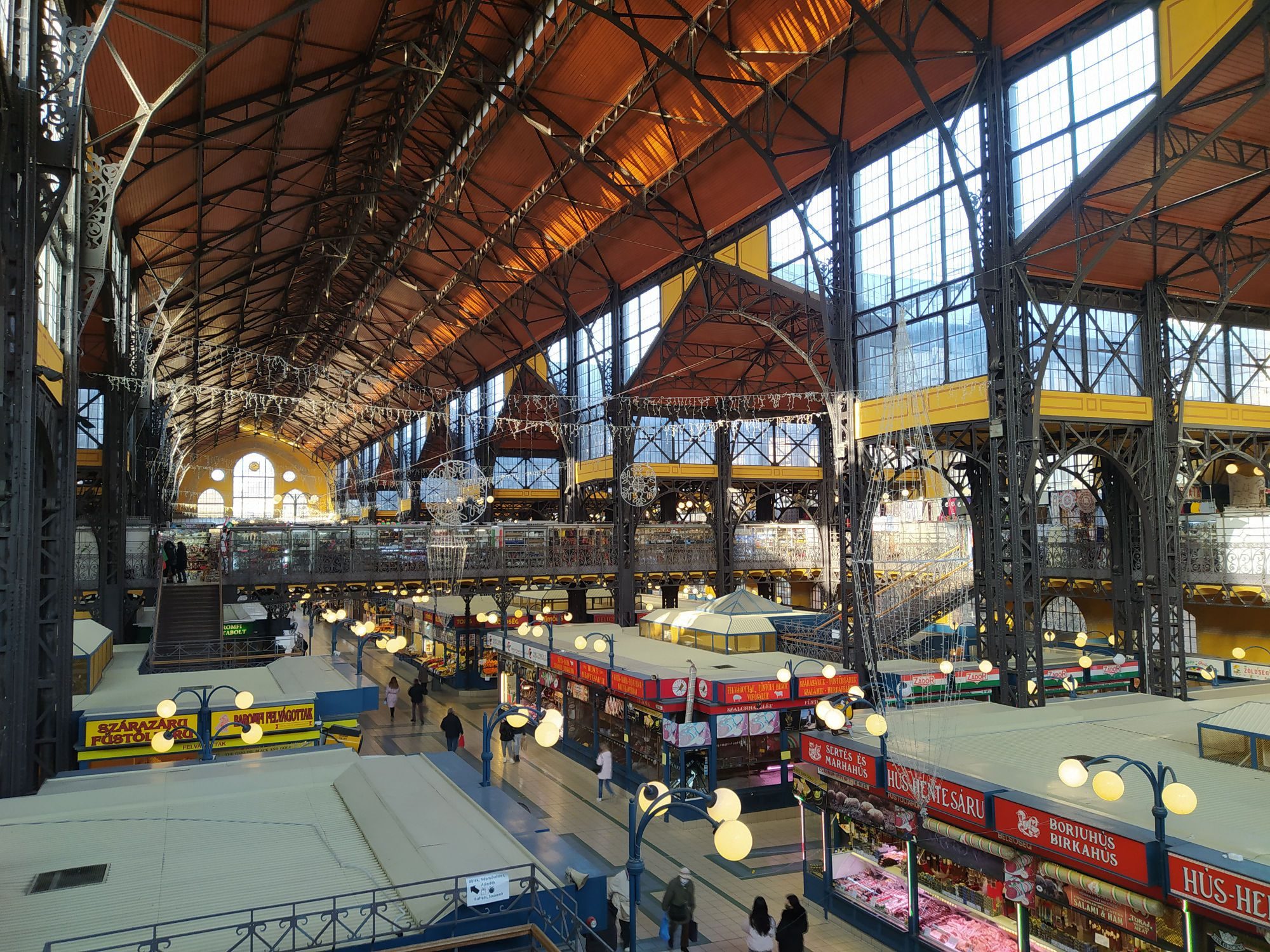
If you’re hungry already (again) after all that walking, head on over to the Central Market Hall. It’s one of the oldest and biggest markets in the city. It has a history dating to the late 1890s. You’ll also find plenty of souvenir shops, local food stalls, and restaurants here.

Cap your day off by getting dessert in New York Café, one of the most beautiful cafes I’ve been to so far. I was fortunate enough to get a table as a walk-in customer. It was winter and during one of COVID’s surges in Europe. During any other time, you might need a reservation. Visit their website to book. The ice cream I ordered was average and was too pricey for what I got. However, the ambiance and seeing the interior of the café made up for it. It was like being inside a museum with its beautiful frescos and décor.

Day 3
Eger is a possible day trip you can do to take a break from exploring Budapest. It’s a quaint and pretty small town a few hours away by train. Its main sites are close to each other which make it easy to explore. The first attraction you’ll see as you walk towards the old town is the fetching Eger Cathedral. This beautiful, yellow-hued structure dates to 1837. Once in the old town, you’ll see the towering St. Anthony Church. I went up the castle ruins to get overlooking views of the old town. Eger Castle has an entrance fee of HUF 2,400.

How to go: You can board a train from one of Budapest’s train stations. The ticket bound for Eger costs HUF 2,394 and the return ticket is at HUF 2,520.
Day 4
Explore more of Pest by visiting the City Park and Szechenyi Thermal Bath. Both places and other attractions are within walking distance of each other. Szechenyi is one of the most famous attractions in Budapest; depending on when you go there’ll be a lot of people soaking in the baths. You can check out their website for prices and more information. Consider trying the baths in the evening; prices are lower at that time and during the weekdays. While in the park, you can visit the Heroes’ Square and Millennium Monument and the Vajdahunyad Castle. Other attractions include the Museum of Fine Arts, House of Music, and the Budapest Zoo and Botanical Garden. You can spend more time here, depending on how much you like zoos and museums. Alternatively, you can go on another short day trip to Szentendre.

Szentendre is accessible by train, which make it a popular addition to Budapest itineraries. It’s small but pretty. It’s famous for the historic architecture of its buildings and as an artist neighborhood. You’ll find galleries, souvenir shops, cafés, and restaurants here.
How to go: Start at Batthyany Square Metro Station then look for the HEV train station. You can buy tickets at the machines or booths. A round trip ticket costs HUF 620.
Day 5
If you’re up for another day trip, consider adding Esztergom to your itinerary. Despite its small size, Esztergom has a storied past. It used to be the Hungarian capital from the 10th to the mid-13th century. You’ll also find the largest church in the country here, the Esztergom Basilica. Esztergom was another nice getaway form the big city. I walked most of the time during my stay here.

How to go: Take the train from one of Budapest’s train stations. I paid HUF 1,064 from Budapest to Esztergom and HUF 1,120 for the return ticket.
Day 6
You can spend your 6th day just relaxing in the city. Return to your favorite spots, cafés, and restaurants, and soak in the city views before leaving.
Budapest is a bustling city that deserves more than just a day trip. There’s plenty to see and do during your stay. I’ve met travelers who’ve been to the city multiple times and are sometimes staying for more than a week. Six days is just enough to see the highlights of the city and do some day trips to discover more of the country. Budapest’s affordability and charm make it a noteworthy addition to your Europe trip itinerary.

*There are many buses that go to different parts of Hungary from Budapest. However, I prefer taking the train when doing trips from this city. It’s possible to buy tickets directly from the station on either the Buda or Pest side. I frequently check this website for schedules and from which station trains depart from.
*Some of the city’s main attractions and beautiful buildings are lit up at night (Buda Castle, Parliament Building, Fisherman’s Bastion, St. Stephen’s Basilica, Matthias Church, and others), which make for a nice walk in the evening.

*Budapest is also known as a party destination. There are plenty of clubs and unique ruin bars. The latter are establishments that use neglected buildings and give them new life. Some of the recommended ruin bars include Szimpla Kert, Instant and Fogas, Doboz, and Mazel Tov.
How much will you spend?
I found myself spending a little bit more on food, nice cafés, and restaurants during my stay in Budapest, though everything was more affordable compared to other cities I’ve been to in Europe and even in Asia. I spent roughly HUF 14,400 (seems like a lot), roughly 35.6 Euros, or around P2,000 a day, excluding flights. I could’ve spent less if I didn’t occasionally splurge on nice cafés and restaurants in the city or take day trips.
Budapest is a very affordable city. If you’re a budget traveler, you can find a bed in a dorm for around P700-P900 a night (during weekdays). Private rooms aren’t so expensive either; you can find a room for around P2,500-P3,000 a night. You can still save a lot of money if you’re sharing with one other person. You’ll spend more daily depending on where you eat, stay, and the things you do. Even if you’re not staying in a dorm, you’ll still get good value whenever you eat out or do activities in Budapest.
Money-saving tips
Budapest is an affordable city where you can stay a few extra days in. Here are some tips you can follow to save money during your trip:
- Dorm rooms are cheaper compared to private rooms. So, if you don’t mind sharing a room with others, dorms provide you with an affordable option.
- Buy the multi-day public transportation passes to save money whenever you take the tram, bus, or subway.
- Eat a meal or two at the markets or bakeries in the city.
- If you plan on experiencing the famous thermal baths in the city, it’s cheaper to go during a weekday and after 6 pm.
- Take long walks. Budapest has varied and stunning architecture. I found myself admiring the different style of buildings whenever I enter a different part of the city even if I’m no expert in architecture.
- Make a DIY tour. The city’s compactness makes it easy to explore without booking a tour. However, you can join a free walking tour to get a feel of the city. It’s up to you how much you’d like to tip the guide after the tour.
- Consider traveling during winter or shoulder season because prices are generally lower during this time and there are fewer crowds.
– Rappler.com
Score exciting travel deals using this Klook promo code.
Add a comment
How does this make you feel?
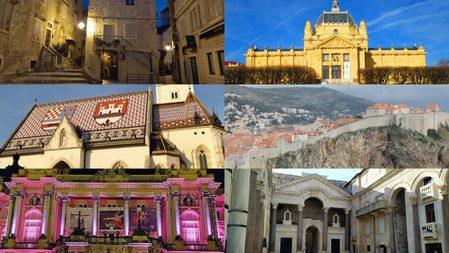



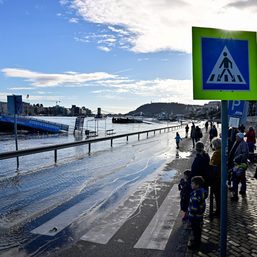



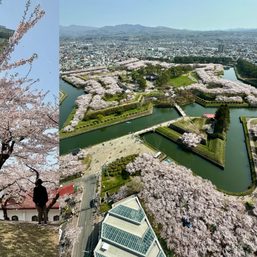
![[Ilonggo Notes] Guimaras: Geared up for success](https://www.rappler.com/tachyon/2024/05/Ilonggo-Notes-Guimaras-May-6-2024.jpg?resize=257%2C257&crop=298px%2C0px%2C720px%2C720px)
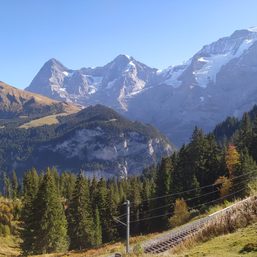
There are no comments yet. Add your comment to start the conversation.